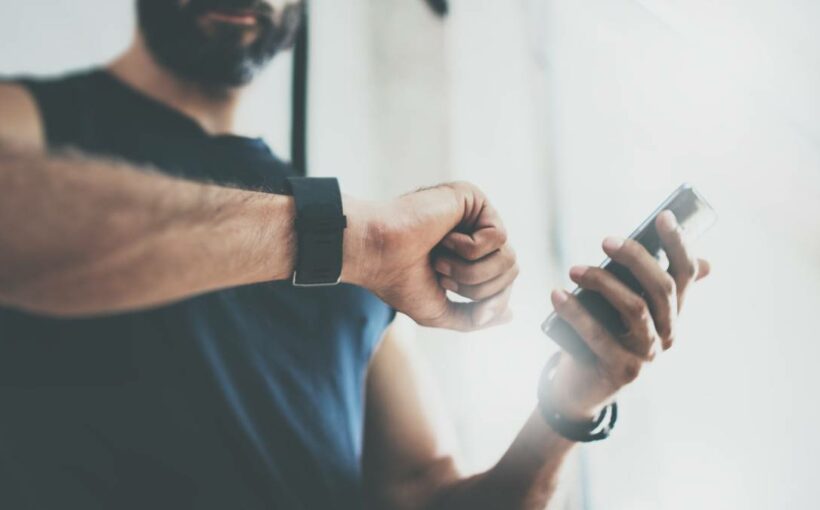OPINION:
The last lockdown was necessary but at a personal level, it really didn’t do me much good. Okay, yes it did prevent a Covid infection, but my diet wasn’t all that and exercise, no longer optional for a person my age, well, I really needed to get heaps more in than I did.
My chiselled dad-bod was in danger of becoming un-chiselled, but more importantly I felt rotten overall.
Luckily, there are tech solutions for that pressing problem, namely wearables and smartphones and the apps that go with them.
There’s some debate around how useful wearables are for health purposes. Some say the nagging reminders stress you out, and I can see why, but they can be turned off.
I have friends who simply go out for runs, not caring about recording the distance, timing and splits, or your heart rate on the steep bits. Which is fine, but I’m in the other camp, and use my Apple Watch to encourage and improve on exercise.
Besides, if and when something happens, you’ve got a timeline of vitals to show to the medics. “Look, everything was fine until August 16; after that, disaster,” you say, pointing at the smartphone. Less guesswork, and easier fine tuning of diagnoses.
If you’re thinking of getting a wearable or other device to monitor your vitals, make sure it’s from a reputable company with strong privacy policies. Don’t give your data to any old app that doesn’t comply with strong privacy protections like EU’s GDPR for example, as it could end up in the wrong hands.
The Apple Watch doesn’t however weigh you. Knowing how unnecessarily heavy you are is useful, and I got a set of Withings Body Cardio scales to tell me as much.
The Body Cardio also measures your body composition with electric impedance and records the data to the Withings Health Mate app over Wi-Fi. Each week, you’ll get a summary email with the stats the scales picked up.
This includes body fat, muscle, bone, and water. As the name implies, the Body Cardio can also check out your heart rate and estimate your vascular age after repeated measurements.
The heart rate function would often not pick up the beat however. When it did, it would sometimes display 140 beats or so per minute which is unlikely in the mornings when I’m barely alive. You also can’t wear anything on your feet for the impedance measurement, as it works by sending a low electric current through your legs, and measuring the voltage drop.
At $269 the Body Cardio is a bit pricey, considering you need a smartphone as well, but up to eight people can use the same scales.
Withings also sent the ScanWatch smartwatch which tracks heart rate, checks for irregular rhythms, and can take “medical-grade” electrocardiograms and measure blood oxygen levels.
The thing about the ScanWatch is that it doesn’t look like a traditional wearable with digits and changeable faces. Instead, the ScanWatch uses hands that move around, three of them, although one’s a progress meter. There’s also a little round digital display for starting exercises, checking your heart rate, ECG and the time in the dark as the dial is not luminous.
If you want a dress watch style wearable that’s fairly easy to use, and covers most bases for health vitals monitoring the Withings ScanWatch is worth considering. It works on Android and iOS but it’s killer feature is up to 30 days of battery life, compared to a day or so for Apple Watch.
If you monitor how you sleep, not having to charge your wearable before going to bed makes all the difference. The ScanWatch loses points for having a proprietary charging cable, which is guaranteed to be hard to replace if you lose it.
Without a GPS (the ScanWatch uses the one in your phone), a small set of activities, no storage for music or fitness podcasts, and that stylish traditional watch face not displaying enough information this isn’t the wearable for athlete-geeks. At $499, you might be tempted to spend a few hundred more for an Apple Watch instead, and forgo long battery life for heaps more functionality.
Does it work then? Testing the Withings ScanWatch and Body Cardio scales by walking and running most days made me shed 5-6kg. My trousers are looser than a politician’s promise at the waist.
The bigger picture view is that wearables can be very useful to modify unhealthy behaviour, and prevent future illness. That, and the ability for medical professionals to remotely monitor common conditions more accurately makes me think Pharmac might want to look into subsidising wearables, as a way to deliver effective health care.
Source: Read Full Article

/cloudfront-ap-southeast-2.images.arcpublishing.com/nzme/MEHEZH2MBC5MQ4CO5CS6TRB5KE.jpg)